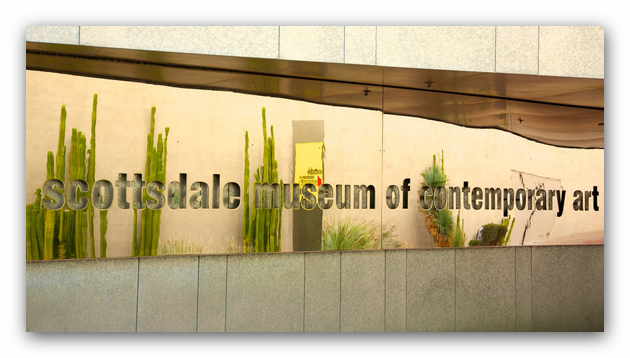Oct 15 2016 - Jan 22 2017
Scottsdale Museum of Contemporary Art
Scottsdale, AZ
Mexico City-based artist Santiago Borja works internationally at the intersection of art, architecture and ethnography. He is known for creating large-scale installations and architectural interventions that cross cultural boundaries and contrast traditional crafts with contemporary theory and modernist design. Architecture + Art: Everything Falls into Place When It Collapses is Borja’s site-specific project in response to the Casa Grande Ruins National Monument – a Southwest icon of Native American culture – and its complex history within the national cultural politics of the U.S. over the past 125 years.
The Casa Grande Ruins National Monument, known in the O’odham language as “Siwañ Wa’a Ki” or “Sivan Vahki,” is one of the largest surviving ancient sites in North America. It bears witness to the skill and creativity of the large community of ancient Sonoran Desert people who inhabited the site, developing wide-scale irrigation farming and extensive trade connections that lasted more than 1,000 years until approximately 1450 A.D. when the location was largely abandoned. The site consists of multiple adobe structures surrounded by a compound wall and contains the remains of a monumental, four-story adobe structure whose purpose and function remain unknown.
In 1892, the Casa Grande Ruins National Monument became the first cultural site in the U.S. to be given national protection, and in 1918, it was re-designated as a national monument by President Woodrow Wilson. In the early 20th century, a series of roofs were constructed over the Great House, culminating in the construction of a massive, modern steel roof that was completed in 1932 and still stands today. The roof was intended to conserve the remarkable structure, but was undertaken without the advice of Native American communities, namely the O’odham peoples who are recognized as the ancestors of those who built the large structure.
The superposition of these two physical structures – one more than 700 years old and the other almost 100 years old – is emblematic of the complicated and difficult relationship between Native Americans and the U.S. Federal Government. It is a juxtaposition of culturally different concepts of time, questions of legacy and belonging, technologies, knowledge and ideas about the future. Borja is interested in this cultural conversation that raises questions about how different cultures – Native Americans, , tourists, academics, artists and administrators – relate to this archaeological site. The presence of the Modern steel roof in this ancient Arizona landscape is a physical reminder of the important questions around how we define and value the Nation’s relationships to living Native American cultures. It also raises the question of the assumed rationalism of Modernism and its believe in its ability to solve problems through technological means, as well as the complexity of interpreting and preserving the material past—ancient as well as Modernist.
Credit: Exhibition overview from museum website
Exhibition Venues & Dates
Oct 15 2016 - Jan 22 2017
Scottsdale Museum of Contemporary Art
Scottsdale, AZ
